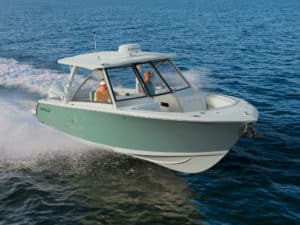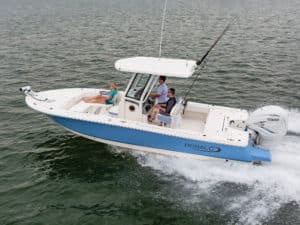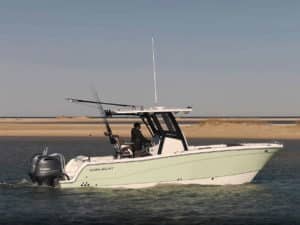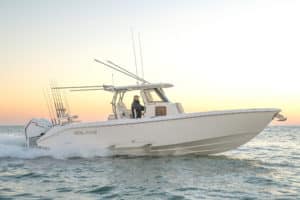According to Internet lore, Bill Kenner designed the very first bay boat in his Arkansas-based Kenner Boats factory. And while I can’t find reports detailing when this happened, I do know that the bay-boat concept — a hybrid of flats-skiff and modified-V center-console design — really caught fire in the early 2000s.
“People realized how versatile bay boats were, and manufacturers started adding features and flair, which changed them from work boats to boats that people were proud to own,” says Charlie Johnson, director of marketing for Maverick Boats, which makes the Pathfinder bay-boat brand.
The lightest flats skiffs float in as little as 6 inches of water. Bay-boat drafts start at 10 inches. To better explore this design, learn more about draft, and look at the shallowest of these vessels, I contacted five builders whose bay boats (22 feet and up) draw 12 inches or less. Here are their perspectives. (Boats are listed by LOA.)
HydraSports Custom 23 Bay Bolt
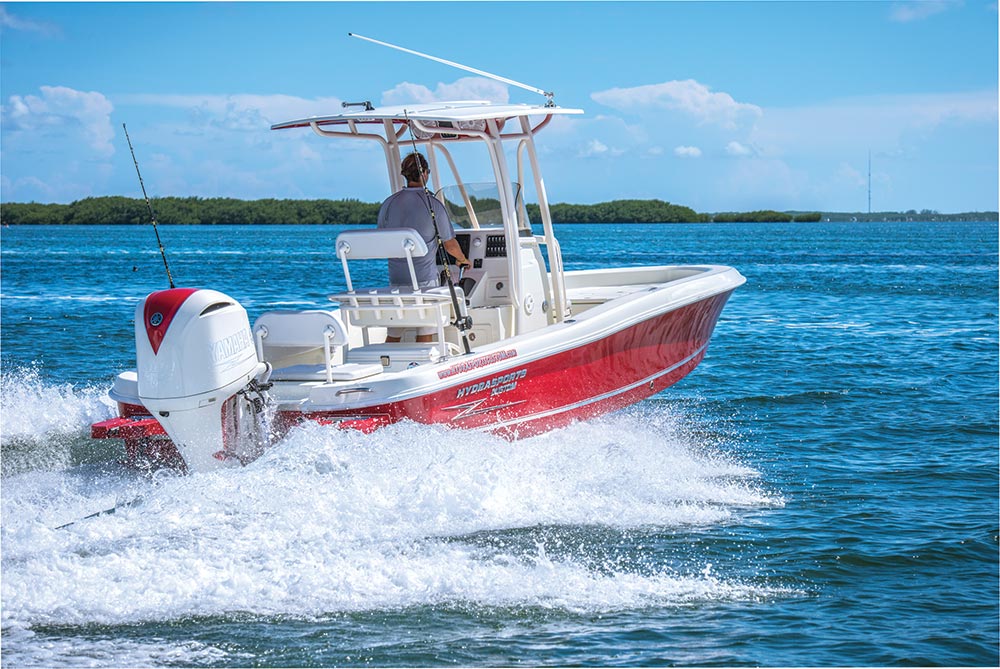
First things first: How draft is measured can differ among boatbuilders, although most use a combination of mathematics and on-water testing. HydraSports measured an 11½-inch draft on the 2300 Bay Bolt under these conditions:
Loaded with one person, fishing gear, five batteries, 50 gallons of fuel, a PowerPole shallow-water anchor and a bow-mount trolling motor.
The engine was raised on the jack plate and tilted about halfway forward.
Advertisement
HydraSports took the boat to a sandbar so the deepest part of the hull brushed the bottom, and then measured the water depth.
“This is a floating measurement,” says Alex Leva, HydraSports Custom president. “In order to get on plane, a few more inches of water are required.”
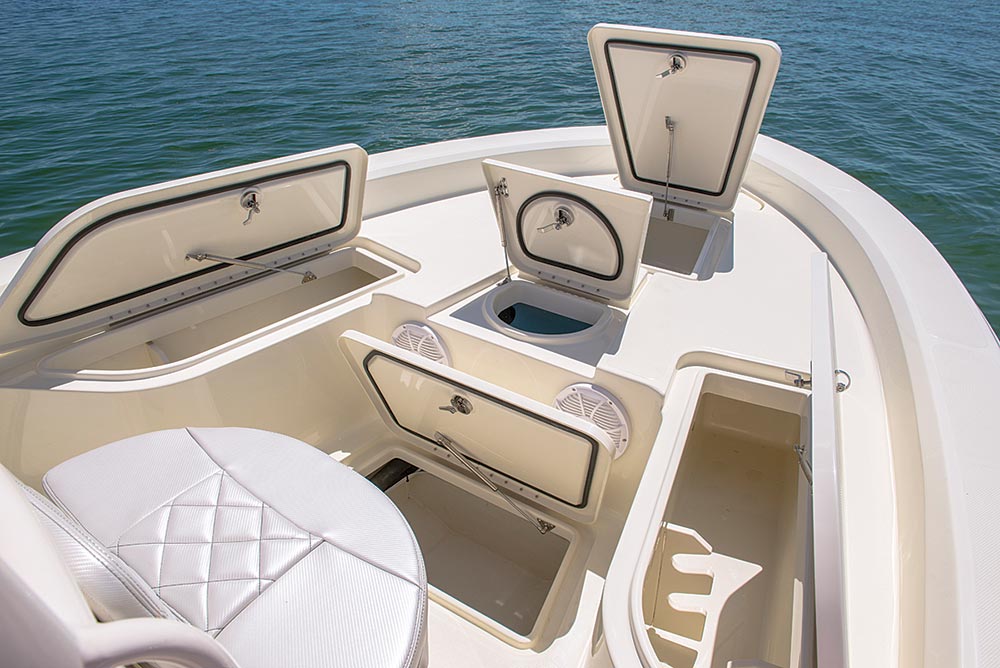
Bay boats like this HydraSports — which feature deeper transom deadrise angles than skiffs — generally run outboards with 25-inch rather than 20-inch shafts. That weight — plus greater fuel and livewell capacity, coupled with additional fiberglass and laminate for the increased length — deepens the draft.
“The poling skiff is more like a motorcycle, specifically light and built for one or two passengers. It runs a smaller V-4 outboard and carries one, maybe two batteries,” Leva says. “Bay boats are more like SUVs. They’re intentionally multipurpose.”
Leva says the Bay Bolt’s nearly 9-foot beam creates more displacement, helping it to float higher than many other bay boats on the market.
HydraSports Custom 23 Bay Bolt Specifications
LOA: 22 ft. 11 in.
BEAM: 8 ft. 10 in.
DRAFT: 11 1/2 in.
DEADRISE: 14 deg.
WEIGHT: 2,600 lb.
Pathfinder 2400 TRS
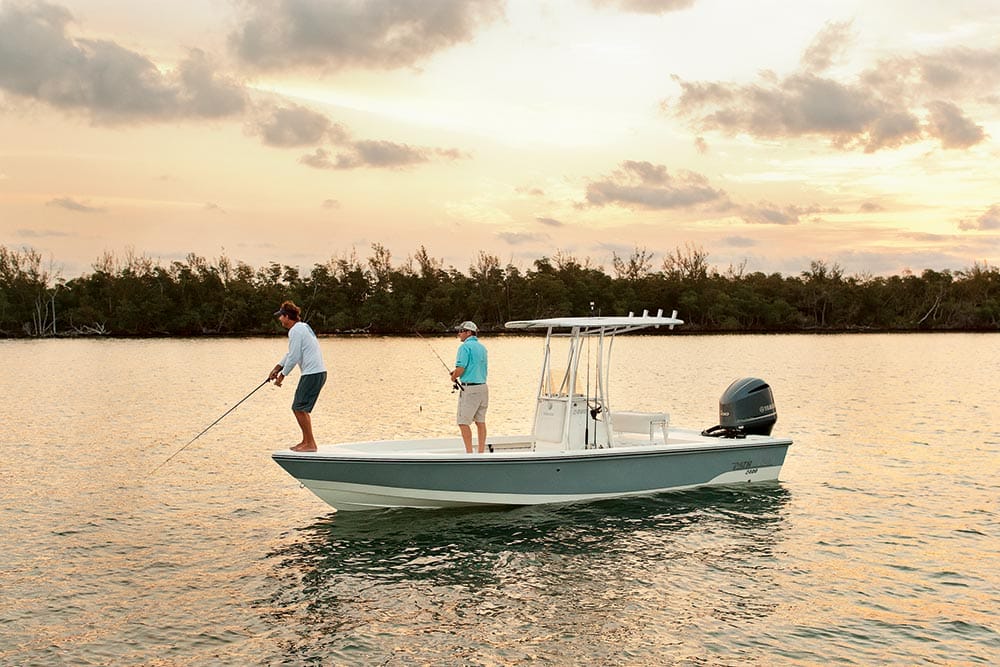
Maverick Boats‘ Charlie Johnson says Pathfinders are designed to have a specific draft based on typical fishing conditions. “By that we mean loaded and balanced with two anglers and gear on board, with the engine trimmed up, as when fishing with a trolling motor,” he says. “All that said, any boat’s draft numbers can vary depending on load and weight distribution.”
Pathfinder’s naval architect uses an algorithm to draw up the hull, given a standard fishing load and the most likely engine package. “We’ve found our architect’s draft numbers to be very accurate by taking the boats with a balanced and standard load, and getting them as shallow as we can,” Johnson says. “When the boat bumps bottom, we push it off the spot and measure the depth. We’ve found that’s the only true way to measure draft.”
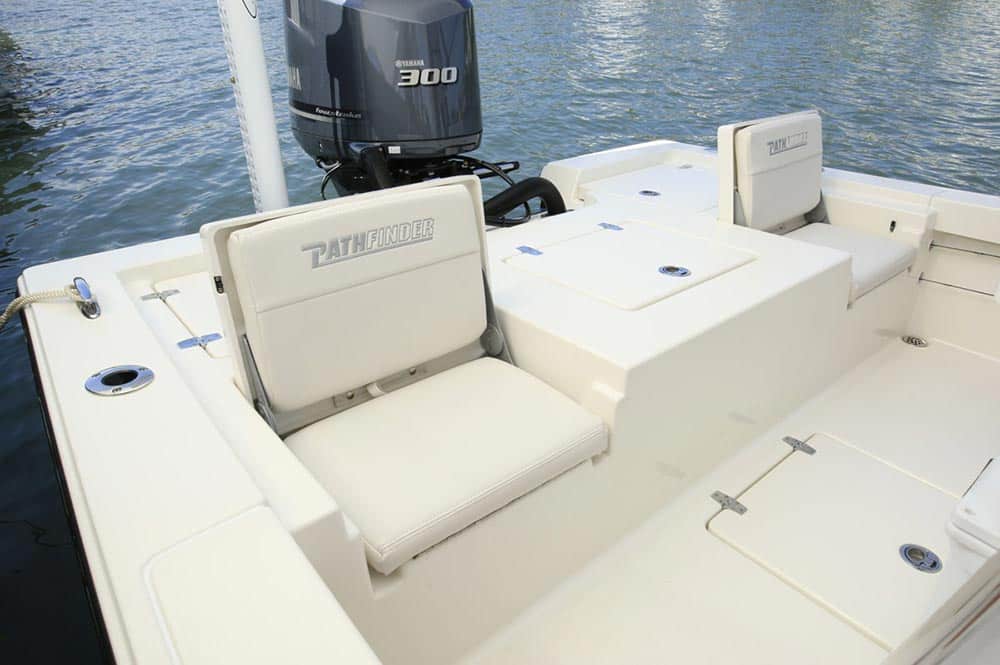
Deeper-V hulls ride better than flat hulls; narrower boats also run more comfortably than beamier center consoles. But both of those traits increase draft — as does weight. Finding the sweet spot among all those characteristics and designing in proper balance offers the best compromise. That skill falls to the architect.
So, could a boatbuilder design a bay boat to float in 6 inches of water? “I think it’s more a matter if it would make sense to do that,” he says. “You can’t fish in water that shallow with a trolling motor down anyways. So unless you’re just drifting — which is a really tough way to chase fish when they get super skinny — you would need to be using a push pole. At that point, the most effective tool for the job would be a technical poling skiff.”
Pathfinder 2400 TRS Specifications
LOA: 23 ft. 11 in.
BEAM: 8 ft. 6 in.
DEADRISE: 15 deg.
WEIGHT: 3,050 lb. (w/ Yamaha F300)
Robalo R246 Cayman
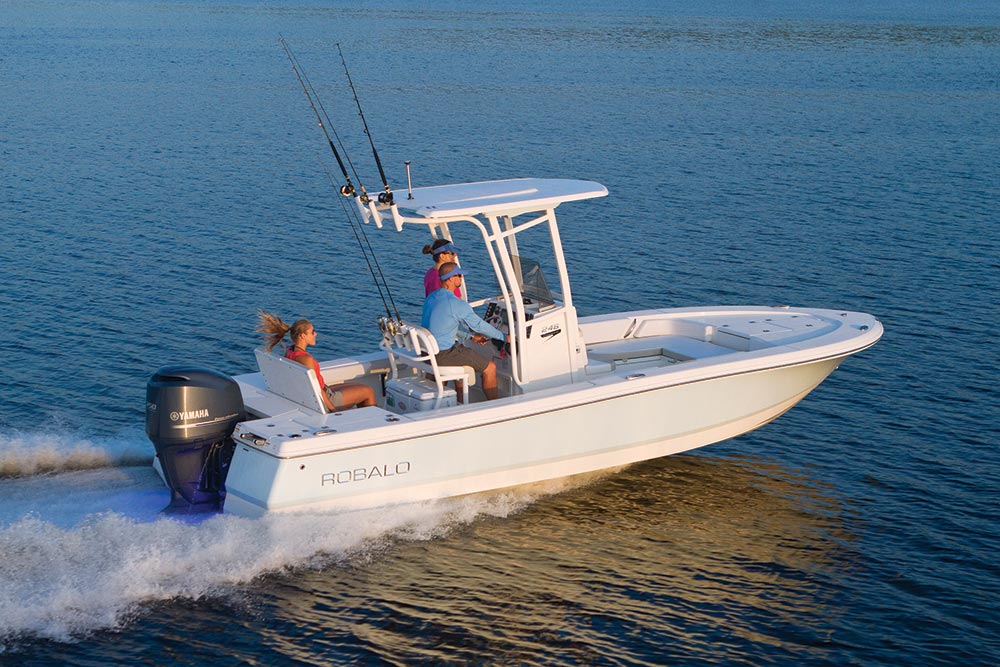
Robalo first measures draft in a test tank from waterline to keel, and then verifies it in shallow-water fishing conditions. The fully rigged boat is tested with its engine trimmed up or with a jack plate and trim in combination.
“Weight can have an effect on the draft of a bay boat, if it’s not designed properly,” says Joe Pegg, Robalo regional sales manager. “Many competitors with dated hull designs sacrifice material to accomplish a shallow draft. Robalo’s goal with the Cayman series was to design a shallow-water boat that’s built to the same heavy-duty standards of offshore hulls.”
Pegg says Robalo achieved its goal without skimping on materials because of its extended V-plane hull design. “We extended the running surface more than 2 feet past the transom, which adds flotation and stability to the hull,” he says. “This allows for planing in shallow water by reducing bow rise and transom dig.”
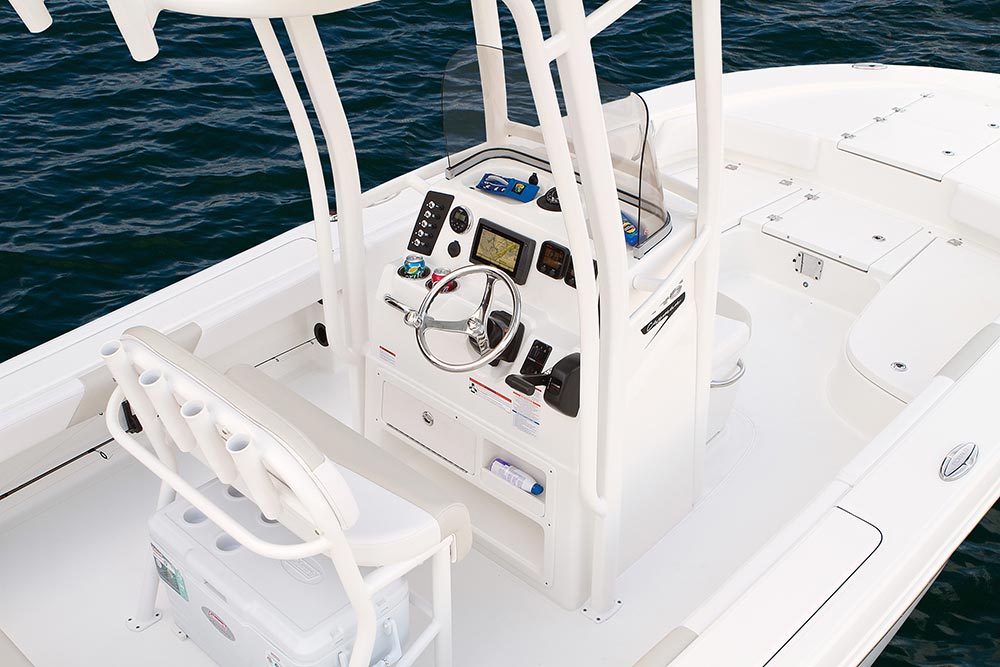
This design allows anglers to use less tab to stay on plane at slower speeds for cruising the shallows in search of fish. Pegg says the extended V-plane also improves midrange efficiency.
The company integrated Kevlar to add strength without much weight, and designed a 9-foot beam, which keeps the boat floating higher and gives it a more big-boat feel, Pegg says.
Robalo 246 Cayman Specifications
LOA: 24 ft. 6 in.
BEAM: 9 ft.
DRAFT: 12 in.
DEADRISE: 16 deg.
WEIGHT: 3,700 lb. (w/ Yamaha F150)
Yellowfin 24 Carbon Elite
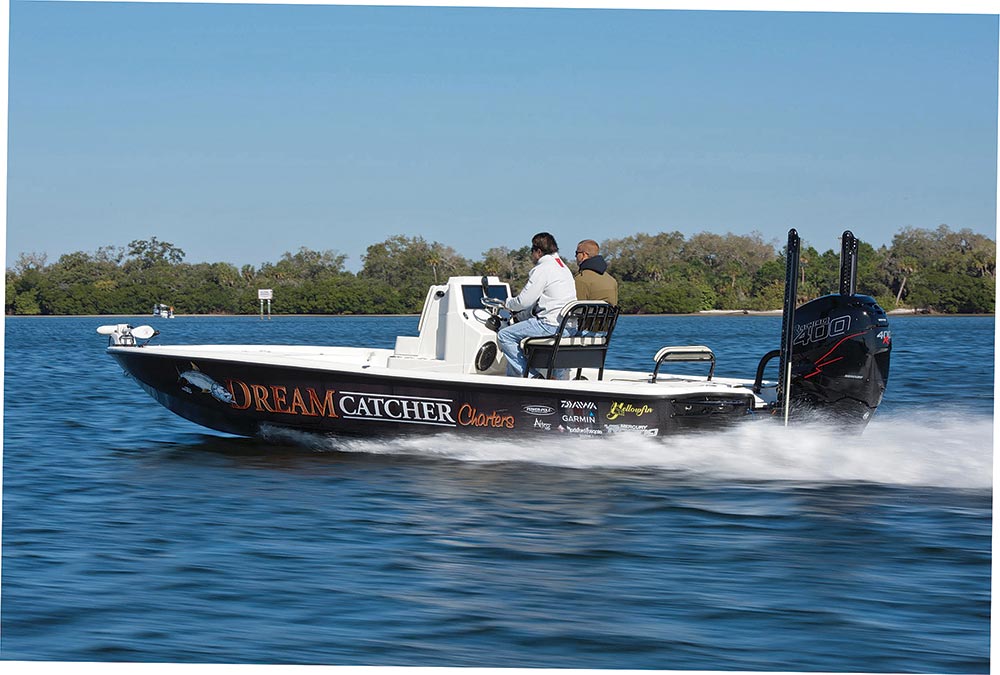
Brand new to Yellowfin’s stable is the Carbon Elite version of the company’s popular 24-foot bay boat. The unique carbon-fiber weave was specifically engineered for this hull. By combining 100 percent vinylester resin and resin infusion, Yellowfin reduced the weight of its original bay boat by 25 percent, resulting in shallower draft, better outboard fuel economy and a faster top end, the company says.
Yellowfin owner Wylie Nagler says formulas can be used to calculate draft, but Yellowfin prefers to float the boat and bottom it out (with engine up).
“If the hull is a good design, and the center of gravity is correct, then the weight shouldn’t really matter,” Nagler says. “We experience the same ride with our standard bay-boat hull. We pick up speed with the lighter hull.”
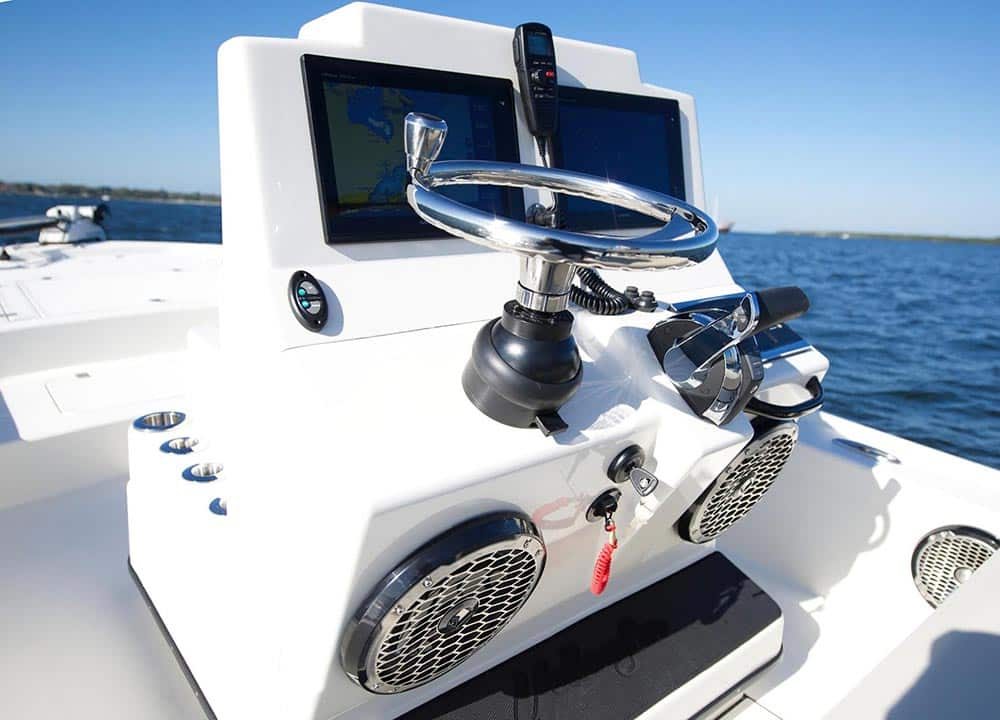
The Carbon Elite does cost more because of the materials. But customers asked for this version, and Yellowfin opted to push the technology envelope.
To make this vessel float any shallower would mean making the bottom of the hull flatter to displace the weight of this bigger platform (bigger than a skiff), Nagler says. “However, then it would not run everywhere a bay boat can run, as far as rough conditions are concerned. So then it’s really no longer a true bay boat.”
Yellowfin 24 Carbon Elite Specifications
LOA: 24 ft. 10 in.
BEAM: 8 ft. 6 in.
DRAFT: 12 in.
DEADRISE: 15 deg.
WEIGHT: 2,400 lb.
Sea Born FX25
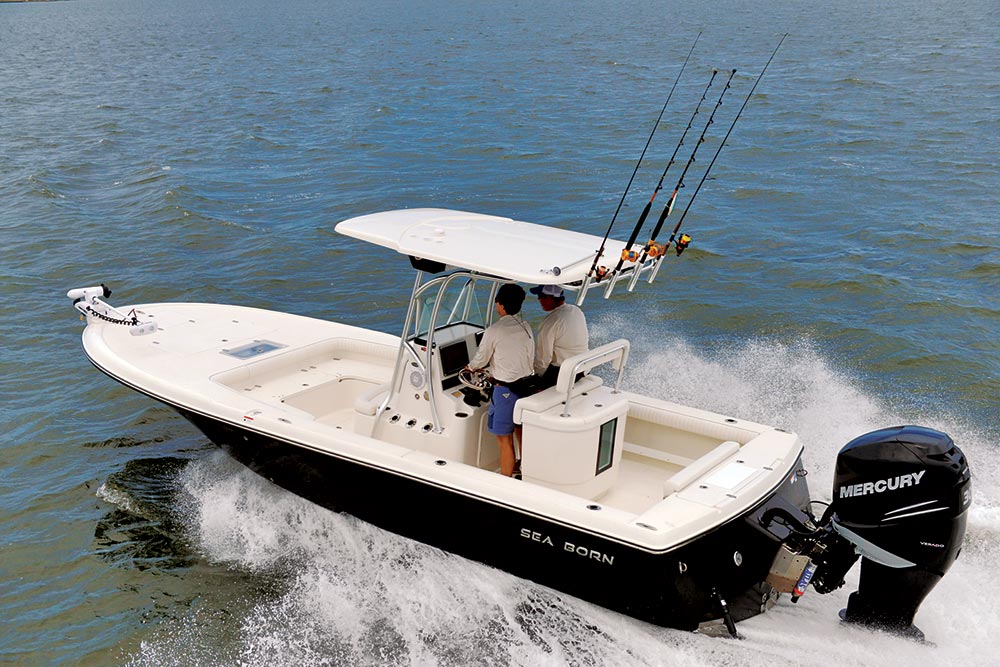
As with other boatbuilders, Sea Born draft-tests its boats with a realistic load and the engine trimmed up. Techs measure the distance from the keel to the bottom in two locations: in the factory test tank and in a local lake.
Since both locations feature fresh water, the draft measured is actually 3.33 percent greater than it would be in buoyant salt water, says Wally Bell, Sea Born president. So the final number reflects a little more math. The calculations are then checked against hydrostatics generated from the computer-assisted design software.
Bell says Sea Born reduces the weight of the boat by choosing the optimal fabrics, which lowers the resin load. “For example, standard 24-ounce woven roving has a resin load of about 60 percent,” he says. “Through the use of biaxial-stitch mat, the resin load can be reduced by 8 percent. But the trade-off here is an increase in the overall cost.”
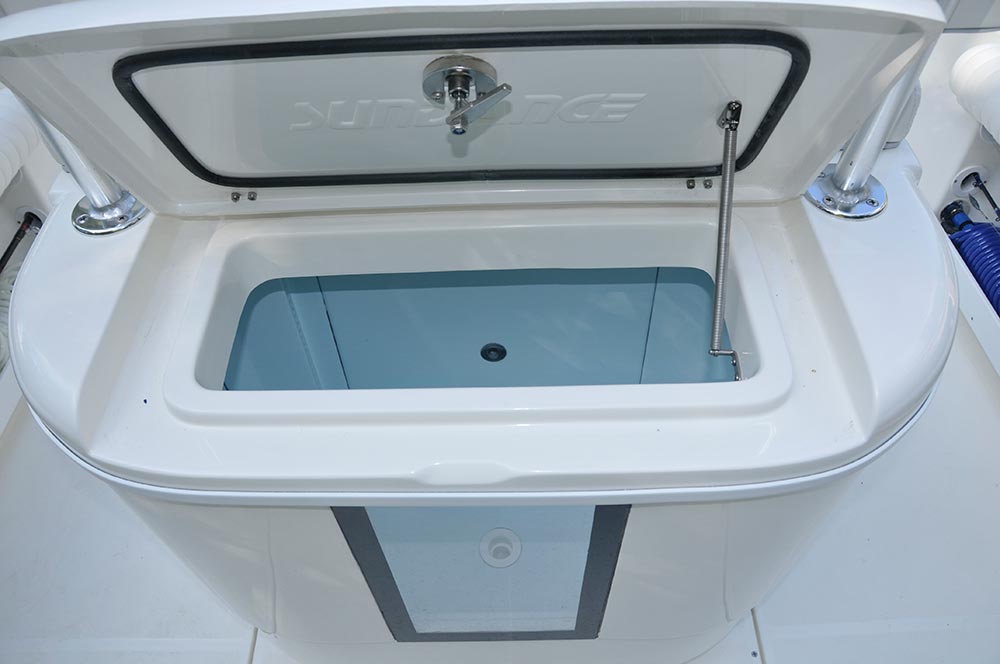
On all bay or center-console boats, Sea Born uses a combination of woven roving, biaxial-stitch mats, and engineered deck cores that vary in density. “In addition, we’ve utilized embedded aluminum plates for the higher load areas,” Bell says. “The final goal is obvious: to build boats that balance weight savings against the cost drivers.”
With regard to ultimately building an even shallower, 6-inch-draft bay boat, Bell says, “I have [built one]. The problem: A bay boat with a 7-degree or less deadrise would have to be built from expensive fabrics. The result would be a very rough-running, lightweight boat with a hefty price tag. Based on that, such an offering would be unattractive to most buyers.”
Sea Born FX25 Specifications
LOA: 24 ft. 11 in.
BEAM: 8 ft. 9 in.
DRAFT: 11 in.
DEADRISE: 17 deg.
WEIGHT: 2,600 lb.

